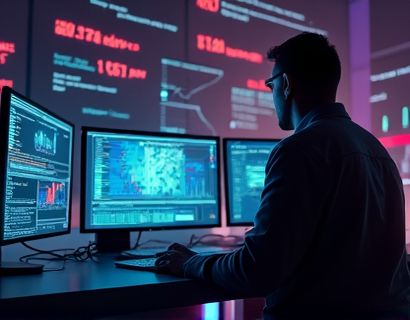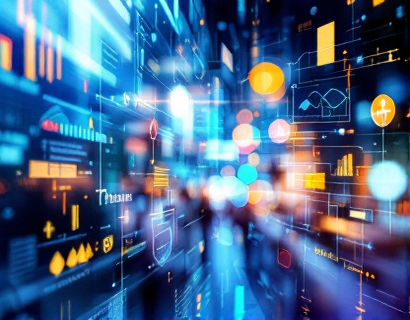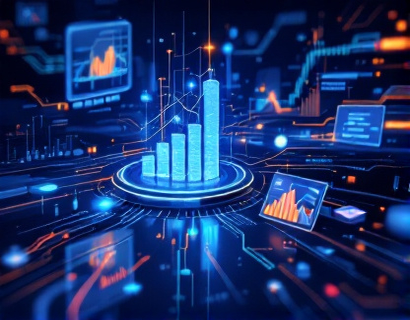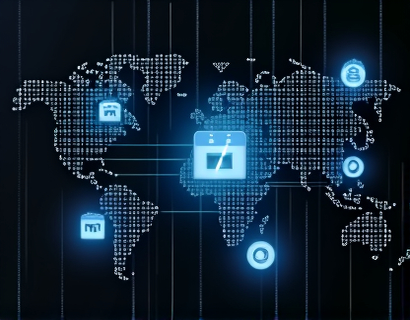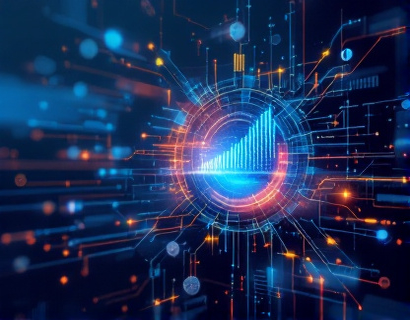Blockchain-Enhanced Asset Tokenization: Unlocking Liquid Value and Market Accessibility for Real-World Assets
Blockchain technology is at the forefront of a transformative shift in asset management, offering a novel solution to the traditional challenges faced by asset holders and investors. By enabling the tokenization of real-world assets, blockchain significantly enhances liquidity and broadens market accessibility. This innovative approach securely integrates physical assets into the digital ecosystem, providing a transparent and efficient framework for all stakeholders involved.
The concept of asset tokenization involves representing physical assets, such as real estate, art, machinery, and even intangible assets like patents and copyrights, as digital tokens on a blockchain. These tokens are unique digital representations that mirror the properties and value of the underlying assets. The process begins with the identification and valuation of the asset, followed by the creation of a smart contract that defines the rules and conditions for the token's issuance, trading, and management.
One of the primary benefits of blockchain-enhanced asset tokenization is the enhancement of liquidity. Traditional real-world assets are often illiquid due to their physical nature and the cumbersome processes involved in buying, selling, and transferring ownership. Tokenization addresses this by converting these assets into tradable digital tokens that can be bought, sold, and exchanged on various blockchain platforms. This liquidity improvement allows asset holders to realize value more quickly and efficiently, making it easier to meet financial obligations or invest in new opportunities.
Market accessibility is another significant advantage of asset tokenization. By breaking down the barriers to entry, tokenization enables a broader range of investors to participate in the market. Smaller investors who previously could not afford to enter certain markets due to high entry costs can now invest in fractions of assets, thereby democratizing access to investment opportunities. This increased participation can lead to more vibrant and dynamic markets, with greater price discovery and more efficient allocation of capital.
The integration of real-world assets into the blockchain ecosystem also brings enhanced transparency and trust. Blockchain's inherent characteristics, such as immutability and decentralization, ensure that all transactions and asset histories are recorded in a tamper-proof manner. This transparency reduces the risk of fraud and errors, as every transaction is verifiable and auditable. For asset holders and investors, this means a more secure and trustworthy environment, which is crucial for building confidence in the market.
Furthermore, blockchain-enabled asset tokenization streamlines transactions and reduces costs. Traditional asset transactions often involve multiple intermediaries, such as banks, lawyers, and brokers, each adding layers of complexity and cost. Smart contracts, self-executing contracts with the terms directly written into code, automate and enforce the terms of the transaction. This automation eliminates the need for intermediaries, reducing transaction fees and processing times. The result is a more efficient and cost-effective process for all parties involved.
The application of blockchain-enhanced asset tokenization extends beyond traditional tangible assets to include intangible assets. Intellectual property, such as patents, copyrights, and trademarks, can be tokenized to create fractional ownership models. This allows multiple parties to invest in and benefit from the value generated by these intangible assets. For instance, a copyright holder can issue tokens representing fractions of the copyright, enabling other creators to use the copyrighted material while receiving compensation. This model not only generates additional revenue streams but also fosters collaboration and innovation.
In the real estate sector, tokenization can revolutionize the way properties are bought, sold, and managed. Fractional ownership of real estate through tokens allows multiple investors to own parts of a property, making high-value real estate more accessible. This model can also improve liquidity in the real estate market, as tokens can be traded more easily than physical property deeds. Additionally, tokenized real estate can attract a global investor base, increasing the potential for higher returns and diversification.
The automotive industry is another area where blockchain-enhanced asset tokenization can bring significant benefits. Vehicle ownership, maintenance records, and even the trading of used parts can be managed through tokenized assets. This not only simplifies the ownership process but also enhances the traceability and authenticity of vehicles and their components. For example, a car's ownership history, service records, and parts provenance can be stored on the blockchain, providing a transparent and verifiable record for buyers and sellers.
In the realm of supply chain management, tokenization can improve traceability and efficiency. By tokenizing assets such as raw materials, components, and finished goods, each step in the supply chain can be tracked in real-time. This transparency helps in identifying bottlenecks, reducing fraud, and ensuring compliance with regulations. For instance, in the food industry, tokenized tokens can track the journey of produce from farm to table, ensuring food safety and quality.
The financial sector can also leverage blockchain-enhanced asset tokenization to create new financial instruments and improve existing ones. Securitization, the process of pooling various types of debt or assets and selling them to investors as securities, can be streamlined through tokenization. This allows for the creation of more liquid and tradable financial products, enhancing market efficiency and access to capital. Additionally, tokenized bonds and stocks can offer new investment opportunities with lower minimum investment requirements, making finance more inclusive.
Despite the numerous advantages, the adoption of blockchain-enhanced asset tokenization is not without challenges. Regulatory uncertainty remains a significant hurdle, as existing financial regulations may not fully accommodate the unique characteristics of tokenized assets. Governments and regulatory bodies are actively working on frameworks to address these gaps, but the evolving nature of blockchain technology means that regulations will need to be flexible and forward-looking.
Another challenge is the technical complexity involved in implementing tokenization solutions. Asset holders and investors need to have a basic understanding of blockchain and smart contracts to fully leverage the benefits. Education and user-friendly platforms will be crucial in overcoming this barrier and promoting wider adoption.
Interoperability between different blockchain platforms is also an important consideration. For tokenized assets to achieve maximum market accessibility, they need to be usable across various platforms and ecosystems. Standardization efforts and cross-chain solutions are essential to ensure seamless integration and interaction between different blockchain networks.
In conclusion, blockchain-enhanced asset tokenization represents a groundbreaking development in asset management, offering enhanced liquidity, market accessibility, transparency, and efficiency. By bridging the gap between physical and digital worlds, this technology empowers asset holders and investors to unlock new potential and participate in a more dynamic and inclusive market. As the ecosystem continues to evolve, addressing regulatory and technical challenges will be key to realizing the full potential of tokenized assets.








